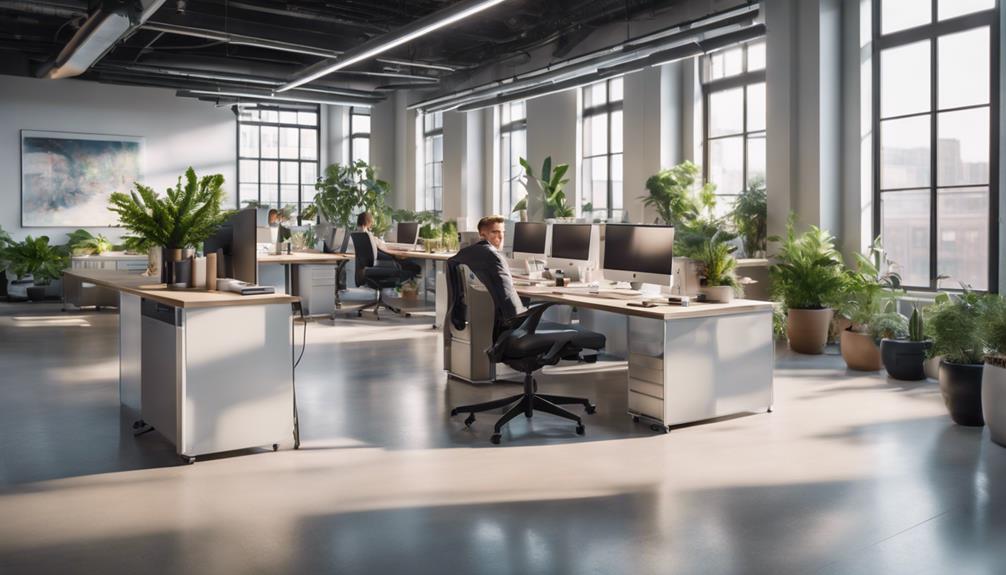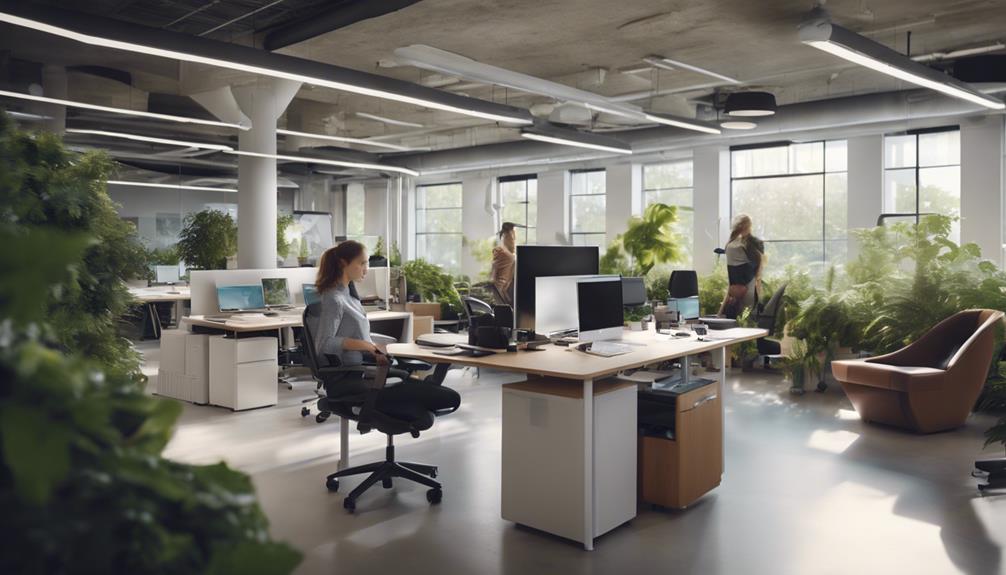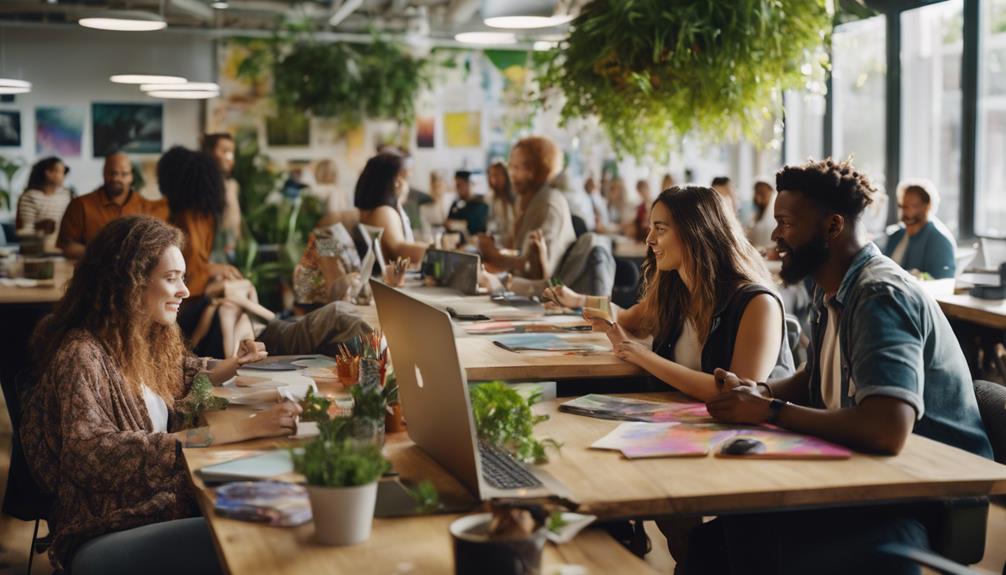To maximize productivity with smart office designs, start by balancing privacy and collaboration. Open layouts boost communication, while private spaces minimize distractions. Use adjustable desks and ergonomic chairs for comfort, and incorporate collaborative tables to foster teamwork. Choose energizing colors like yellow for creativity and green for balance, and don't forget natural elements like plants and large windows to create a calming atmosphere. By actively involving employees in the design process, you'll cater to their preferences and enhance satisfaction. There's a lot more to explore about creating the ideal workspace that truly supports productivity and well-being. Additionally, integrating technology that supports virtual meetings and hybrid arrangements ensures a seamless connection between in-office and remote team members. This setup not only enhances collaboration but also aligns with the growing popularity and benefits of remote work, such as flexibility and reduced commuting stress. By combining thoughtful design with modern work trends, you can create a workspace that adapts to diverse needs and fosters long-term success.
Key Takeaways
- Incorporate adjustable desks and ergonomic seating to promote comfort and reduce fatigue, enhancing overall productivity.
- Design flexible spaces that cater to both collaboration and concentration, allowing employees to choose their ideal work environment.
- Utilize energizing colors and varied textures to create an inviting atmosphere that boosts mood and creativity among team members.
- Introduce natural elements such as plants and large windows to improve air quality and foster a calming workspace that enhances focus.
Open Vs. Private Office Layouts
When choosing an office layout, it's crucial to balance the need for privacy with the benefits of collaboration. If your team frequently handles confidential tasks, private offices can help employees focus and minimize distractions.
On the other hand, if teamwork and brainstorming are key, an open concept design can foster communication and creativity. Polling your staff about their preferences can guide you in making the right choice.
Remember, a well-planned layout not only enhances productivity but also boosts morale. While open layouts may save on utilities and promote a sense of community, private spaces are essential for tasks that require concentration.
Ultimately, understanding your team's specific needs will lead to the most effective office design.
Achieving the Ideal Balance
Achieving the ideal balance between open and private office spaces requires careful consideration of your team's work styles and preferences.
To find this balance, focus on these key aspects:
- Nature of Work: Identify tasks that need collaboration versus those requiring concentration.
- Employee Input: Poll your team to understand their preferences for workspace types.
- Flexibility: Create versatile spaces that can adapt to changing needs, like shared desks and private pods.
- Community Spaces: Incorporate areas for social interaction, fostering relationships without compromising focus.
Essential Furniture and Design Elements
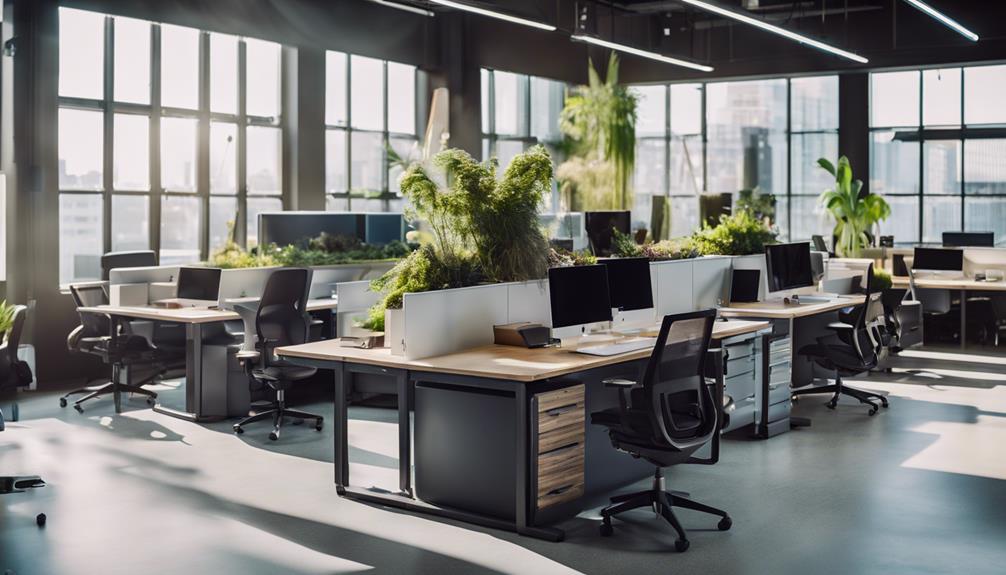
Choosing the right furniture and design elements is crucial for creating a functional and inviting office environment. You should consider both style and practicality to enhance productivity. Here are some essential furniture options to think about:
| Furniture Type | Purpose | Benefits |
|---|---|---|
| Adjustable Desks | Promotes healthy posture | Reduces fatigue |
| Collaborative Tables | Encourages teamwork | Fosters communication |
| Ergonomic Seating | Supports comfort | Increases focus |
Incorporating these elements not only optimizes your workspace but also creates a pleasant atmosphere. By blending aesthetics with functionality, you'll set the stage for improved productivity and employee satisfaction. Choose wisely, and watch your team's performance thrive!
Impact of Color and Texture
Incorporating the right colors and textures can significantly enhance your office environment, influencing both mood and productivity. Here's how you can leverage them effectively:
- Choose energizing colors: Use red for stimulation, yellow for creativity, and blue for calmness.
- Balance the palette: Incorporate green to encourage communication and a sense of balance among team members.
- Add texture: Introduce elements like exposed brick or woven rugs to create a welcoming atmosphere.
- Use decorative accents: Incorporate paintings or pottery that resonate with your brand, making the space feel more personalized.
Incorporating Natural Elements
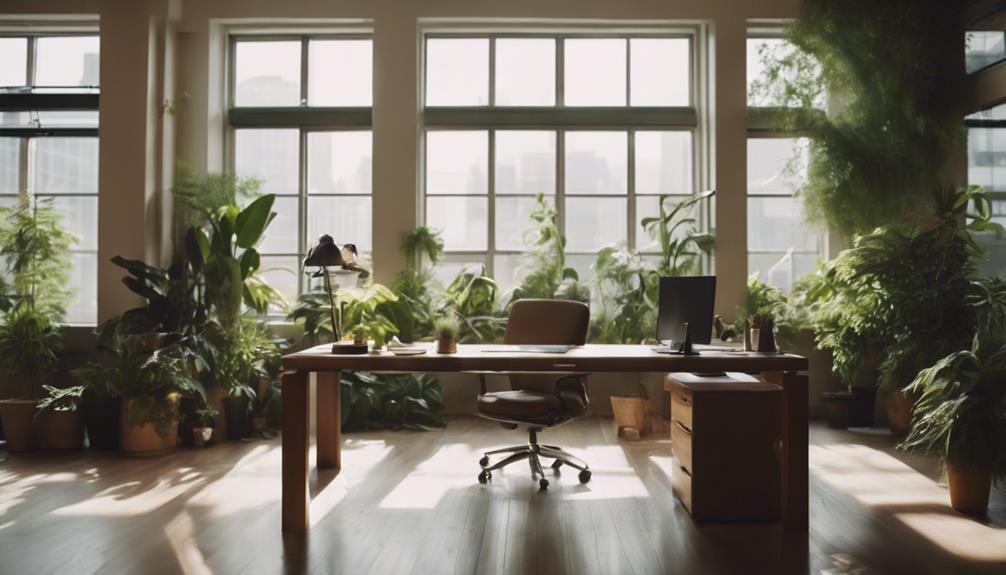
Natural elements can transform your office space, boosting both wellbeing and productivity. Incorporating low-maintenance plants not only enhances air quality but also adds a refreshing aesthetic.
Consider features like wooden walls or stone flooring to create a seamless connection between indoors and outdoors. Large windows that frame natural views can significantly increase comfort and satisfaction among employees, making them feel more at ease.
You'll find that these elements foster a calming atmosphere, encouraging focus and creativity. Additionally, flexible furniture options, like desks made from sustainable materials, can adapt as your needs evolve.
Conclusion
Incorporating smart office design can truly transform your workspace.
Did you know that well-designed workplaces can increase productivity by up to 20%?
By finding the right balance between open and private areas, selecting essential furniture, and using color and natural elements, you can create an environment that inspires creativity and collaboration.
Don't underestimate the power of your surroundings—optimize your office layout today to boost both your performance and job satisfaction!

